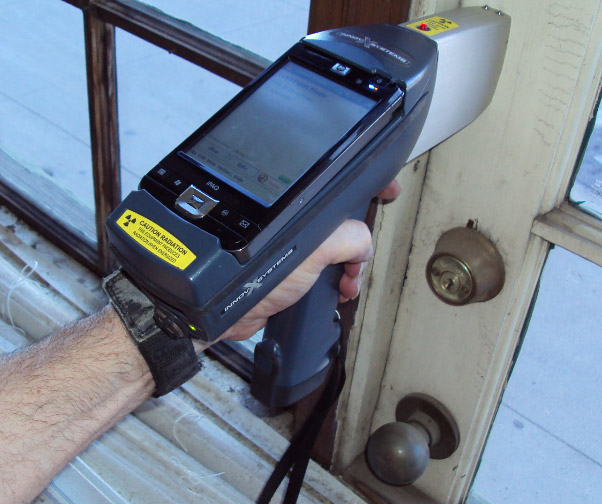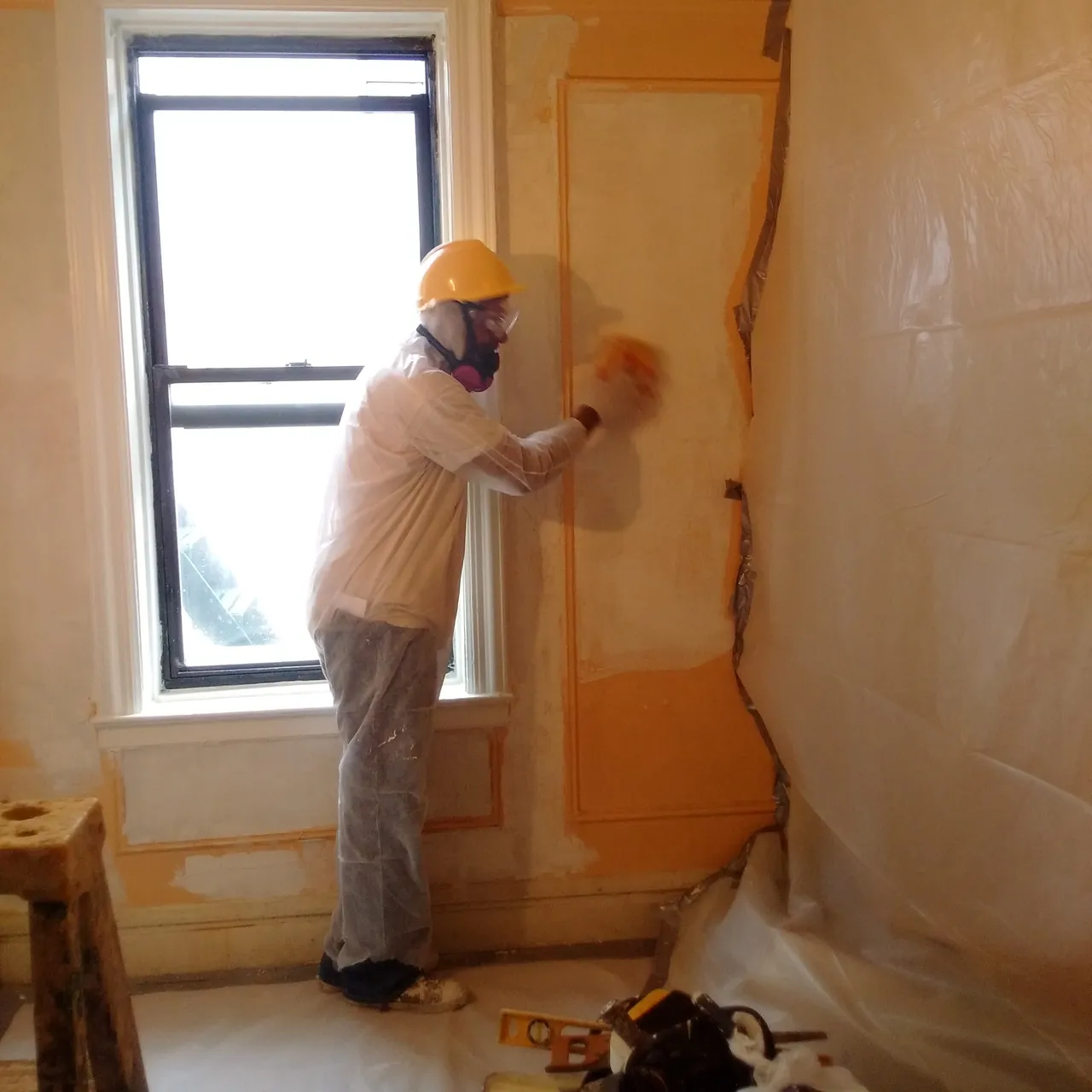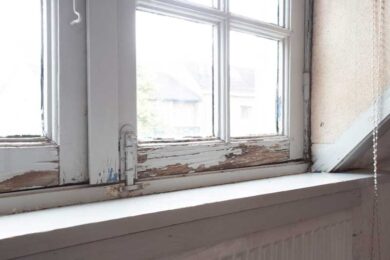Relied On Lead Paint Removal Company-- NYC's Premier Lead Abatement Service
Relied On Lead Paint Removal Company-- NYC's Premier Lead Abatement Service
Blog Article
Best Practices for Making Sure Safe and Thorough Lead Infraction Reduction
Dealing with lead offense abatement needs a multi-faceted approach to guarantee both safety and security and conformity. Initial analyses using advanced detection techniques such as XRF analyzers set the phase for a precise understanding of contamination levels. Incorporating correct containment strategies, including impermeable obstacles and HEPA filtering, coupled with the usage of individual safety devices (PPE) for employees, creates the foundation of a protected operation. Thorough cleaning protocols, featuring HEPA vacuuming and wet-wiping, are vital. It's the last clearance procedure, entailing thorough inspections and laboratory testing, that truly confirms a lead-free environment, ensuring long-term safety. How do these practices adjoin to assure thorough lead reduction?

Initial Analysis
Carrying out an initial analysis is an important very first step in lead infraction abatement. This phase incorporates a comprehensive evaluation of the building to determine the presence, degree, and particular areas of lead-based risks. Certified experts, such as qualified lead examiners or take the chance of assessors, must perform a detailed site assessment, utilizing tools like X-ray fluorescence (XRF) analyzers to properly spot and gauge lead concentrations in paint, dirt, dirt, and water.
The assessment has to also consist of a review of the structure's background, previous reports, and any type of issues or health problems reported by occupants - Lead Removal Contractors. Documenting the searchings for diligently is vital, as these documents create the basis for developing an efficient reduction strategy. An extensive analysis also involves sampling and lab evaluation, which are critical to confirm the existence of lead and overview succeeding activities
Furthermore, it is crucial to connect the outcomes transparently to all stakeholders, consisting of homeowner, occupants, and governing authorities. By making certain that the initial assessment is conducted with precision and rigor, professionals can lay a solid foundation for a targeted and efficient lead abatement process, ultimately protecting public health and guaranteeing compliance with regulatory standards.
Proper Containment
Appropriate containment is critical to protect against the spread of lead pollutants during reduction activities. Effectively taking care of containment minimizes the threat of lead dust and particles migrating to non-work locations, thereby safeguarding both the atmosphere and people outside the prompt work area.

Regular evaluations of the control location are essential to check for violations or weak points in the obstacle. Any identified concerns need to be without delay addressed to keep the integrity of the control. By adhering to these techniques, abatement tasks can successfully control lead contamination and minimize affiliated health dangers.
Worker Protection
Guaranteeing employee security is critical during lead reduction tasks to avoid occupational exposure to harmful lead particles. Important measures include the usage of personal safety devices (PPE) such as respirators, handwear covers, and full-body matches especially developed to obstruct lead find more dust and my sources fumes. Employees should go through thorough training on the correct use and upkeep of PPE, including healthy testing for respirators to make certain optimum effectiveness.
Engineering controls, such as neighborhood exhaust ventilation systems, are vital in lessening air-borne lead focus in the workplace. Management controls should also be executed, consisting of restricting the period of direct exposure and revolving workers to reduce specific direct exposure times. Normal clinical security and biological surveillance are important for very early detection of lead absorption, allowing prompt intervention and treatment.
Furthermore, establishing a purification protocol is important. Workers must follow rigorous purification treatments before breaks and at the end of their change to avoid lead dust from being brought outside the work area. This includes comprehensive hand and face cleaning with lead-specific cleaning agents and changing out of polluted clothes.
Meticulous Cleanup
Maintaining a secure workplace extends past worker protection and includes thorough clean-up to ensure lead particles are completely gotten rid of from the site. The procedure of precise cleanup is essential in avoiding the recontamination of the eased off area and safeguarding both existing and future residents.
To accomplish a detailed clean-up, all workspace should be methodically decontaminated. This entails using specialized HEPA (High-Efficiency Particulate Air) vacuum and wet-wiping methods to catch and remove fine lead dirt that might have decided on surfaces. It is important to clean all straight surface areas, including floors, home window sills, and kitchen counters, as well as upright surface areas that might have entraped lead fragments.
Employees have to wear proper personal protective tools (PPE) throughout clean-up to stay clear of exposure to residual lead dirt. Made use of cleaning materials such as wipes, sponges, and mop heads should be disposed of in conformity with dangerous waste disposal laws.

Final Clearance
Final clearance is the crucial concluding stage of lead abatement that figures out whether the site is safe for reoccupation. This important step entails detailed inspection and screening to confirm that all lead risks have actually been successfully eliminated. The process starts with a visual assessment by a licensed lead-based paint inspector or danger assessor to make certain no noticeable dirt or particles stays. This is adhered to by accumulating dust clean samples from various surfaces, including floors, windowsills, and other straight surfaces. Lead Removal Contractors.

Final clearance testing not just safeguards future owners however also makes sure compliance with regional, state, and government pop over to this site regulations. Moreover, it functions as a recorded recognition of the abatement professional's adherence to industry best techniques. Making certain an extensive and successful final clearance is crucial in safeguarding public wellness and fostering count on in the abatement procedure.
Verdict
Ensuring secure and thorough lead violation abatement demands a diverse approach including initial assessments with sophisticated detection approaches, efficient containment strategies, stringent worker security procedures, and meticulous clean-up treatments. The last clearance stage, including detailed evaluations and lab screening, is essential to verify conformity with EPA standards. Adherence to these best techniques guarantees a risk-free setting for owners, reduces health and wellness dangers, and maintains governing needs, thereby promoting public health and safety in lead-affected areas.
Report this page